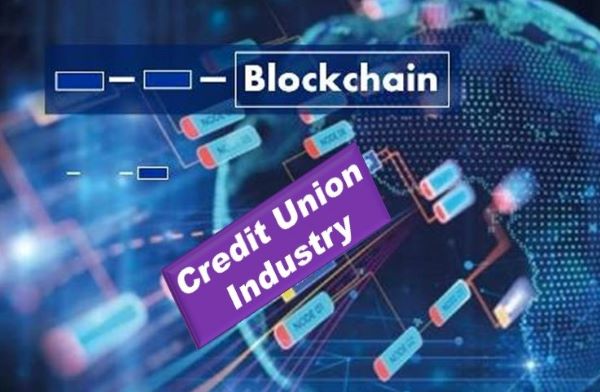Distributed ledger technology can help with efficient transaction completion and proving identities.
Blockchain
Blockchain is reshaping industry operations around the world. From supply chain management to insurance claims processing, this new technology has impacted nearly every sector and business – including credit unions.
While self-sovereign identity is one of the most well-known use cases of blockchain in banking operations, this application only exhibits a portion of blockchain technology’s potential. The underlying technology for blockchain, distributed ledger technology (DLT), provides credit unions with a decentralized network, meaning it relies on scattered nodes instead of a centralized location, which each credit union or identity holder can access. Since DLT relies on having multiple independent nodes, credit unions using this type of network can leverage the connectivity to radically increase efficiencies in everyday operations, including modernizing call center operations, improving the onboarding process and addressing challenges faced with cross-border payments.
Dealing With the Demands of Call Center Operations
Call center operations are a central part of any credit union but have proven to be a serious stressor on employee and member relations. Both parties have continuously lamented over how expensive and time-consuming member authentication time is, and these issues greatly impact both member and employee satisfaction rates. Using DLT, credit unions can easily eliminate these problems and create a stronger relationship between both parties.
The LexisNexis Risk Solutions’ 2018 True Cost of Fraud Study reported that financial institutions’ average cost of fraud in the call center environment has risen to $0.58 per call, and over 70% of fraud losses are caused by identity theft and account takeovers. Adding to the complexity, most call centers rely on several tools to verify identities, incurring expensive licensing costs and adding significant time to the process without providing much security benefit.
Credit unions incorporating self-sovereign identity into daily call center operations can increase the efficiency of their operations when verifying member identities, reducing the process to a few seconds – a vast improvement from the industry average of 50 seconds. Notably, the time savings with higher-risk calls can be more than double the normal call.
And, since it is streamlined through one platform, as opposed to many, it can help shorten call times and improve operational- and technology-related costs while potentially decreasing complaints from both employees and members. Plus, the frequent password reset calls could be nearly eliminated.
A shortened, more secure process will prove to be especially beneficial to credit unions that are low on staff in this tight labor market. By creating an ease in authentication, DLT can help lower member friction, increase loyalty, lead to a reduction in fraud losses and potentially lower employee turnover.
KYC and New Member Onboarding
Similar to remote identity verification, current in-person authentication methods tend to cause impatience for all parties. The process is especially extended for new members due to the required additional steps that branch employees must take during the onboarding process. These steps include validating Social Security numbers, a background questionnaire and making sure that the credit union is compliant with the federally-mandated Know Your Customer regulations. Completing this process often requires that employees reach out to multiple sources to confirm the given information and has proven to be an extremely time-consuming task.
By adopting DLT as a tool to verify new members’ identities, credit unions can drastically accelerate the onboarding process. Due to the nature of DLT, new member authentication can become as simple as scanning a government-issued ID to verify essential information as opposed to validating it through multiple sources. DLT allows credit unions to create a unified verification system that addresses the challenges of KYC requirements, leading to a shorter and more secure way to process documents from new members.
Credit unions can redefine their member authentication process, shorten verification time, increase service rates and decrease costs by implementing blockchain-based processes. Simplifying the onboarding process can also help credit unions start new relationships in a positive manner, potentially leading to deeper relationships with these new members.
Increasing the Efficiency of International Payments
Currently, cross-border payments are timely and costly, requiring a series of transfers and facilitation by other financial institutions. Many financial institutions use SWIFT for international transfers; however, transactions frequently take up to two days to complete and normally have a service charge of 2% to 3% of the cost of the transferred funds but could be a higher or lower rate depending on the amount.
DLT can conduct transactions almost instantaneously and with a negligible cost. By utilizing DLT, specifically blockchain, Deloitte approximated a 40% to 80% decrease in transaction costs, as well as a decrease in transaction time down to four to six seconds. As the quantity and volume of cross-border transactions continue to increase, credit unions can easily facilitate the transfer of funds in a fast, secure and cost-effective way.
Distributed ledger technology is transforming the way people conduct business and has unlimited potential for practical applications in credit union operations. Self-sovereign identity with the accompaniment of DLT can help credit unions overcome the increasing demands of call center operations, streamline new member onboarding and increase efficiency in cross-border payments. Notably, with the significant reduction in fraud from DLT’s enhanced security features, credit unions can experience significant annual fraud loss reductions, often paying for itself. By utilizing DLT, credit unions can better satisfy member needs by ensuring they have safe, expedient and cost-effective processes to complete transactions and prove their identities.
Source: Credit Union Times


























